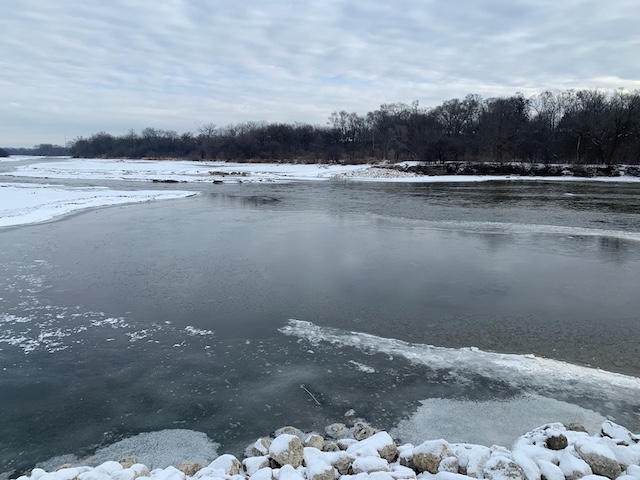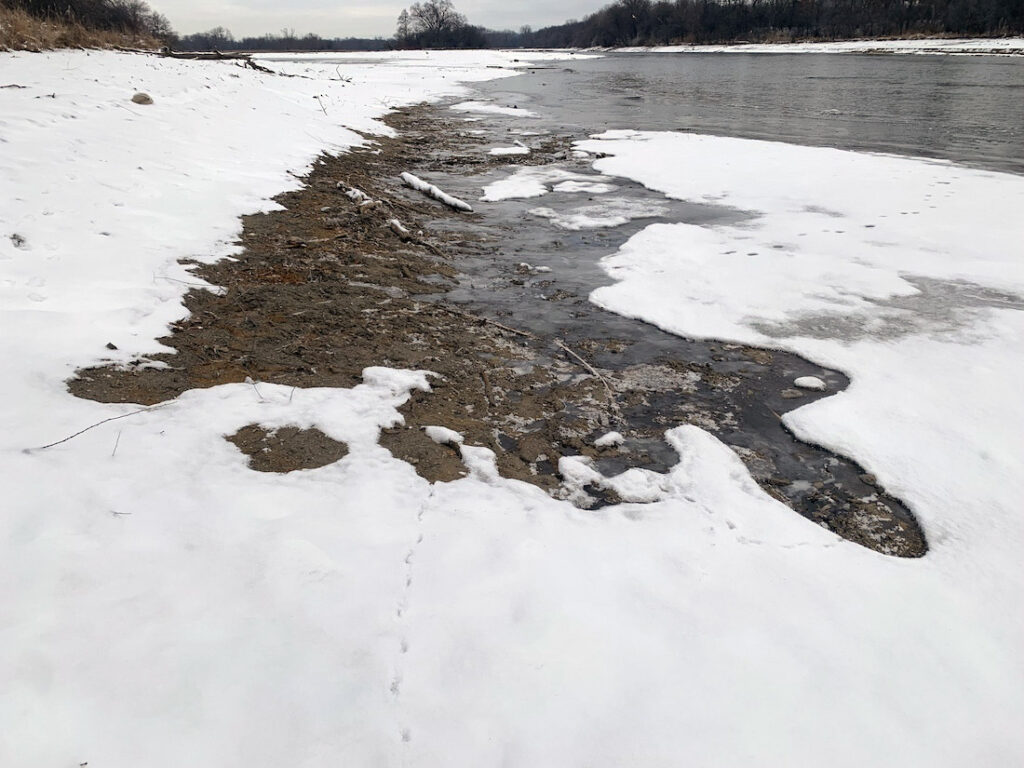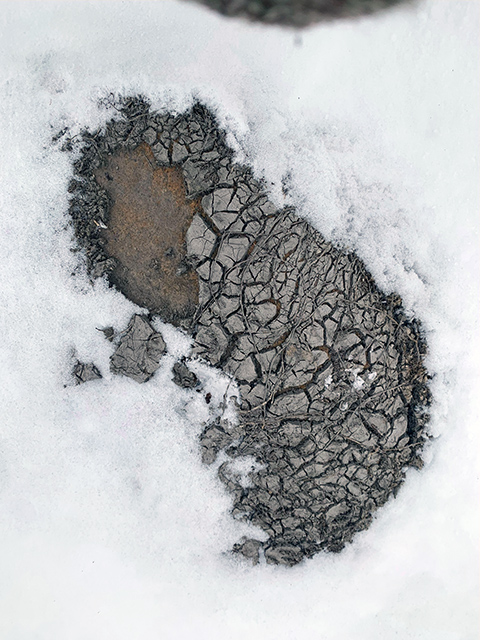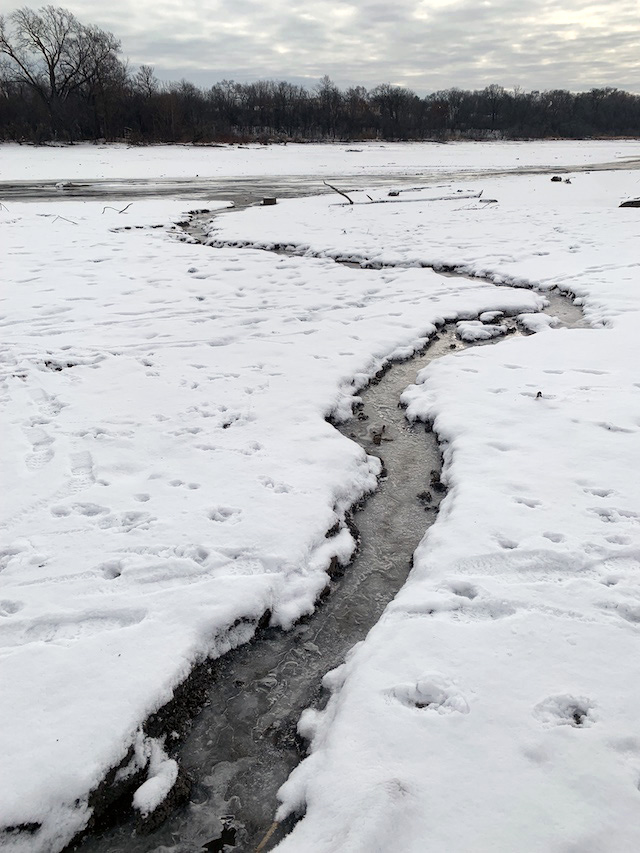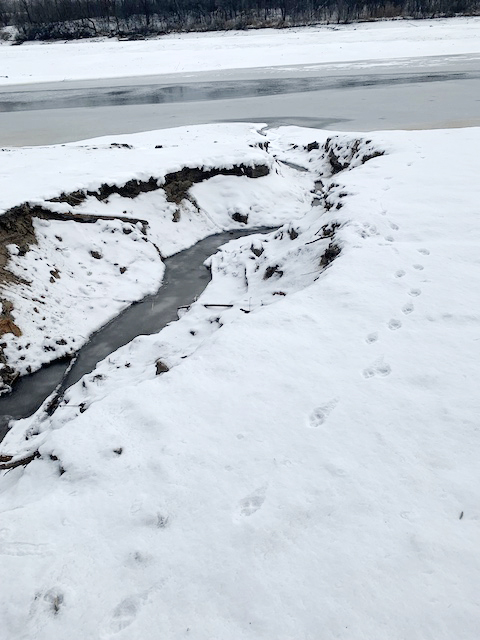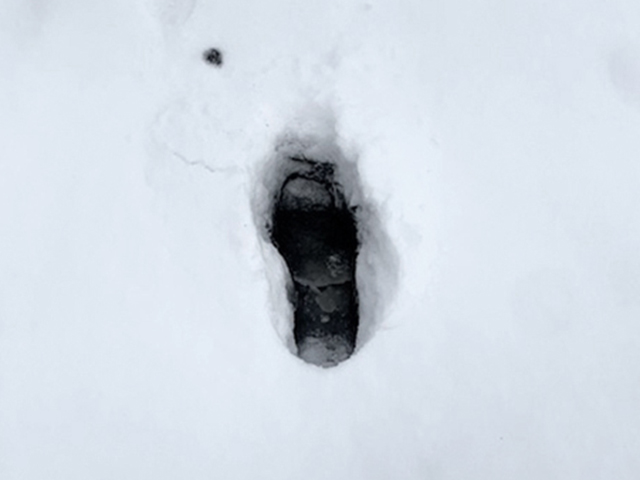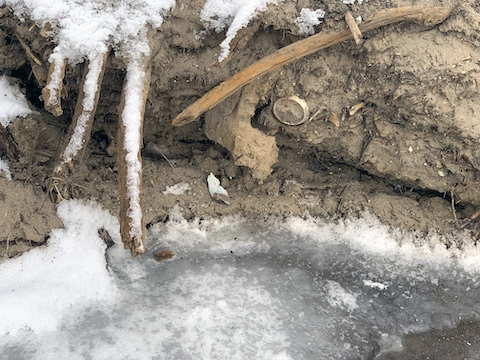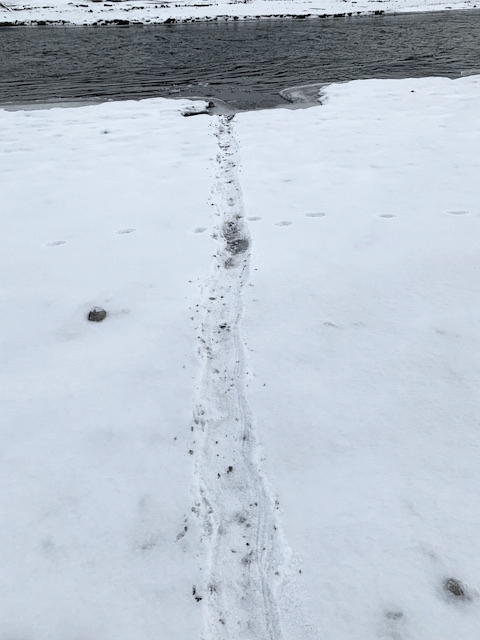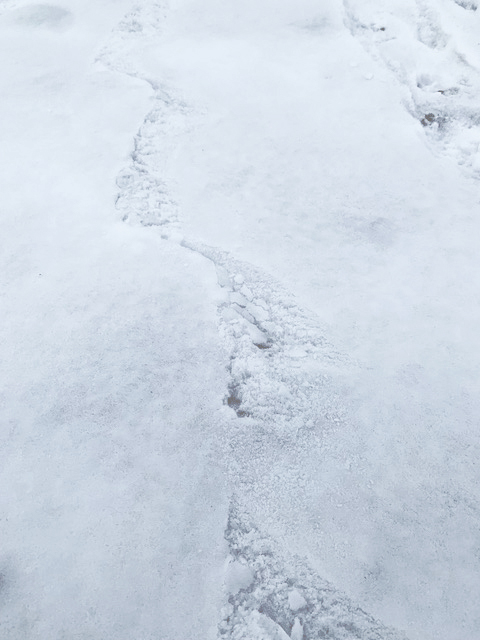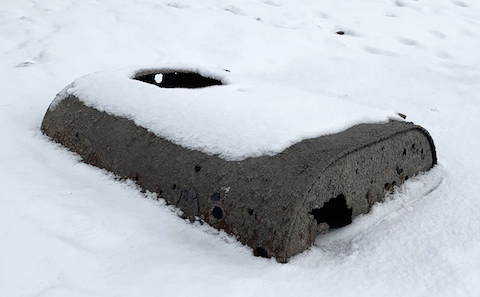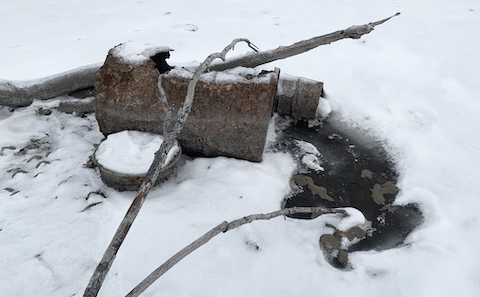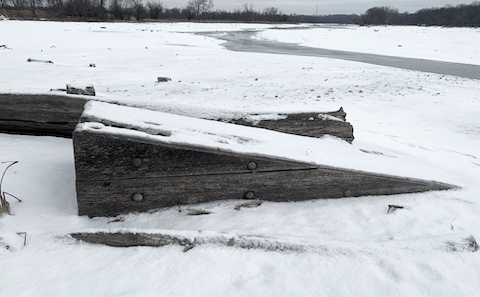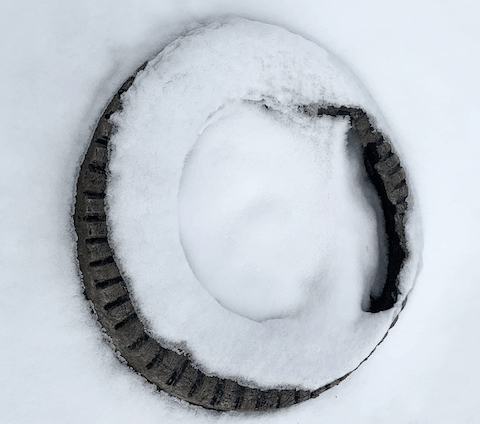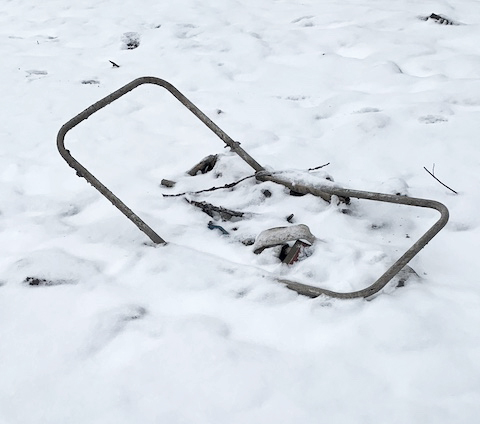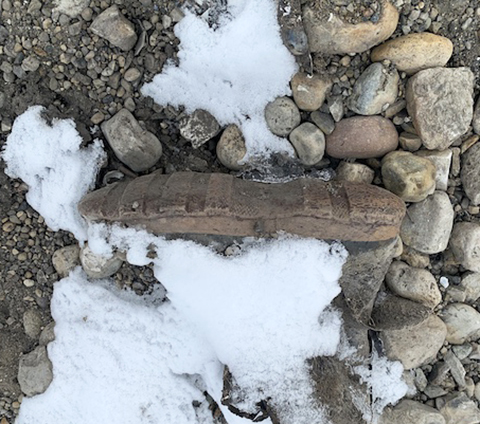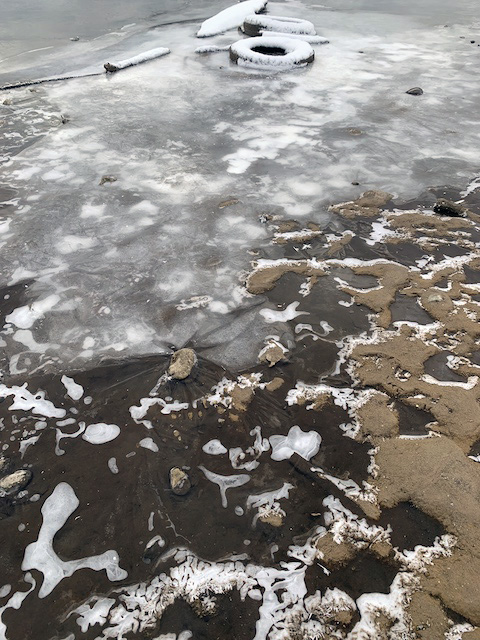The winter solstice marks a turning point from darker times into more light. For many, it is a time to reflect upon the past and move away from negative situations into a future of growth.
The Freed Fox River
This year on the solstice, I took a stroll at the Fox River location of the former Carpenter Dam which was removed in October.
Since then, the river has taken over the restoration process. The main channel at the site was narrow, deep and swiftly flowing enough to produce an audible sound.
What was recently a very slow-moving wide impoundment (a reservoir of water created by a dam. Fox River impoundments have a more lake-like ecosystem than a river ecosystem). was now a rushing river. A 10,000-year-old river had been hidden for nearly 200 years masquerading as a power-producing controlled structure. That day, I saw it as a freed entity. It was an exciting experience.
Restoration in Action
The new shoreline had also been submerged and hidden for that period of time, being buried in sediment. When the impoundment was first drained, the new shore was a deep layer of water-laden fine sediment. Many referred to it as muck. It was very challenging to walk through because its suction threatened to pull a boot off a foot.
As I strolled along the newly exposed shoreline that day, I found it to be drier with mostly sand-sized grains. Part of the river restoration process I witnessed was for the once mucky bottom to have the water evaporate and the finest sediment wash and or blow away.
The remaining larger grains probably will not blow away but will be washed downstream during high flows. But they will be replaced with others. That is what free-flowing rivers do; they scour and deposit material and nutrients. The channel is forming, now narrow, and the shore is dried in preparation for supporting plant life.
New Habitat
As I moved upstream, I found small creek channels forming in the newly exposed soil. These creeks were also part of the lake ecosystem but now they were running from the old shoreline carving small canyons.
I also encountered newly exposed seeps which are areas where water ran laterally through the saturated soil. This too is becoming a habitat expansion. Some had feared the loss of wetlands with the dam’s removal, but here the wetlands were expanding.
As I walked upstream, I followed a previous hiker’s and dog’s footprints. When I saw the white print in the snow become black, I knew that this was a seep. The frozen soil was thawed by the warm groundwater running through it I got to a point where the entire vegetated zone up to the water was a seep and too wet to walk through in shoes.
Animals Activity Evidence
The snow cover offered the opportunity to investigate the tracks of wildlife. The dog-like tracks resembled the gait and meandering path of probably a coyote. Most tracks that traveled from the grassy cover to the river were much more direct. The tracks of racoons were obvious, but some dragged along a belly (turtle) or a tail (beaver) eliminating the individual foot tracks.
Different generations of Bald Eagles observed us from their perches. Mussel shells were abundant and scattered randomly symbolizing a casualty of the change: food for a diversity of creatures, but a lesson in vulnerability. Beaver’s work in the changing habitat is also more evident now.
Artifacts Abound
The trek was also an adventure in a new gallery of the unnatural world too. There were many long submerged, now exposed artifacts. All had a mystery of their origin and use. Some probably had river-related function but the lawn chairs and tires were clearly stranded trash. FOTFR is planning a series of cleanups this spring to further free this section of river from debris that may also include the no longer functioning hunting blinds.
Can you guess what these non-native artifacts are?
Solstice Stroll
The timely visit to the active restoration site was very exciting and inspirational for me. This site is my “home dam” where I have explored and discovered with hundreds of students in boots and canoes. The description of the poor habitat of the impoundment is now just history.
The site is now free of its obsolete control structure. The history of the dam in Carpentersville’s industry, including mussel and ice harvesting is important and will remain. Like the solstice, now is a time for brighter days ecologically and recreationally.
You Are Invited
Visit the site to get a rare opportunity to see a river evolve. Join us in March to remove human artifacts to water quality and aesthetic obstacles.
And mark your calendar for Sunday June 22, 2025. On that day, we will celebrate this newly freed section of the Fabulous Fox! Water Trail. The section is being called El CARDUNAL. It will be a paddle party beginning at the Algonquin Dam and concluding at Elgin’s Kimball Street Dam.


